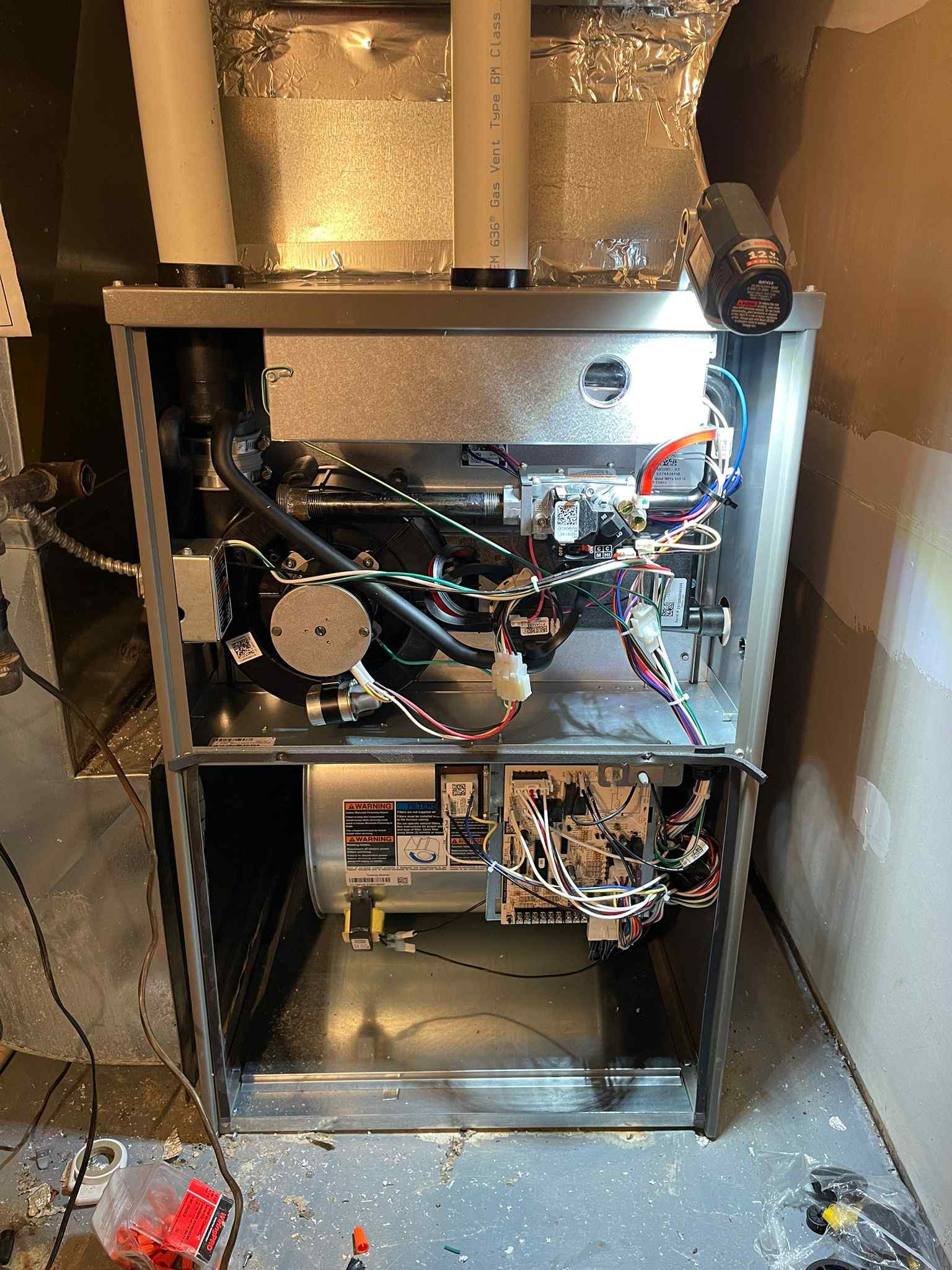Furnace Repair
Furnace repair is essential for maintaining a comfortable home environment, especially during the colder months. Knowing when and how to repair a furnace can help avoid costly replacements and keep your heating system functioning efficiently. With a bit of knowledge, you can address minor issues, understand when to call a professional, and ensure your furnace lasts longer.
Common Furnace Problems and Solutions
Furnaces can experience a range of issues, from minor malfunctions to serious repairs. Understanding common problems can help identify potential repairs before they worsen.
Thermostat Issues Affecting Furnace Performance
A malfunctioning thermostat can prevent your furnace from reaching the desired temperature. Here’s how to diagnose and resolve common thermostat problems:
- Check Thermostat Settings
Verify that the thermostat is set to “heat” and that the temperature is adjusted properly. Misadjusted settings are often the cause of temperature issues. - Replace Batteries
Low batteries can affect thermostat performance. Replace them periodically to ensure accurate temperature readings. - Clean the Thermostat
Dust and debris can interfere with thermostat sensors. Regularly clean the device to keep it functioning smoothly. - Consider Upgrading
Older thermostats may not perform optimally. Upgrading to a programmable or smart thermostat can enhance temperature control and energy efficiency.
Pilot Light or Ignition Problems
If your furnace isn’t heating, the issue may be with the pilot light or ignition system. Here are some troubleshooting tips:
- Check the Pilot Light
Ensure the pilot light is on. If it’s out, relighting it might solve the problem. Refer to your furnace manual for relighting instructions. - Inspect the Ignition System
Electronic ignition systems can fail due to faulty wiring or components. If you suspect an ignition issue, it’s best to consult a professional. - Clean the Burner
Dirty burners can prevent ignition. Cleaning the burner area can improve the furnace’s efficiency and solve ignition issues. - Schedule Regular Maintenance
Regular maintenance checks help keep the ignition system in top shape, reducing the risk of ignition problems.
Blower Motor Malfunctions
The blower motor is responsible for circulating warm air throughout your home. When it malfunctions, the furnace may not distribute heat effectively.
- Listen for Strange Noises
A loud or unusual noise from the blower motor may indicate a problem. Addressing this early can prevent costly repairs. - Inspect the Fan Belt
A worn or loose fan belt can affect the blower motor’s performance. Replacing the belt may resolve the issue. - Lubricate the Motor
Lack of lubrication can cause the motor to overheat. Regularly lubricate the motor to keep it functioning smoothly. - Check Air Filters
Dirty air filters can strain the blower motor. Replace filters every three months to improve airflow and motor efficiency.
Furnace Cycling On and Off Frequently
Frequent cycling may indicate an issue with airflow, thermostat settings, or the furnace’s size.
- Adjust Thermostat Settings
Setting the thermostat too high or low can cause frequent cycling. Adjust it to a moderate setting to prevent strain on the furnace. - Check Airflow
Blocked vents or dirty filters can restrict airflow, causing the furnace to cycle. Ensure vents are open and filters are clean. - Inspect Furnace Size
An improperly sized furnace may cycle too frequently. If this is a recurring issue, consult a professional about the correct furnace size. - Perform Regular Maintenance
Regular maintenance can prevent frequent cycling by ensuring all parts are functioning efficiently.
Preventative Maintenance for Furnace Longevity
Preventative maintenance is crucial for extending your furnace’s lifespan and avoiding unexpected breakdowns. Here are some effective maintenance tips:
Replacing Air Filters Regularly
Dirty air filters can cause many furnace problems, from airflow issues to increased energy consumption.
- Choose High-Quality Filters
High-quality filters improve air quality and efficiency, providing better filtration for your furnace. - Set a Replacement Schedule
Replace filters every three months, or monthly if you have pets or allergies, to maintain optimal performance. - Keep Spare Filters on Hand
Having spare filters allows for quick replacements, especially during peak usage periods. - Inspect Filters Between Replacements
Periodically check filters for excessive dirt, as some environments may require more frequent replacements.
Scheduling Annual Professional Inspections
Professional inspections can identify potential problems early and ensure your furnace is ready for the heating season.
- Book Inspections Before Winter
Schedule inspections in the fall to ensure your furnace is prepared for the cold weather ahead. - Ask for a Detailed Report
Request a report detailing any repairs or adjustments made, which can be helpful for future maintenance. - Inquire About System Efficiency
Professionals can evaluate the efficiency of your furnace and recommend upgrades if needed. - Combine with Duct Cleaning
Annual inspections are a good time to clean ducts, which can improve air quality and furnace efficiency.
Cleaning Furnace Components
Dust and debris can accumulate in furnace components, reducing efficiency and causing wear over time.
- Clean the Furnace Exterior
Wipe down the furnace exterior regularly to prevent dust buildup. - Vacuum Around the Furnace
Dust and dirt near the furnace can enter the system. Vacuuming around it helps keep the area clean. - Inspect the Burner Area
Cleaning the burner area annually prevents clogging and improves ignition reliability. - Keep Vents and Ducts Clear
Clearing vents and ducts of obstructions helps the furnace distribute warm air more effectively.
Testing Safety Features Regularly
Furnace safety features, like the limit switch and carbon monoxide detector, should be tested regularly to ensure safe operation.
- Check the Limit Switch
The limit switch prevents overheating. Test it periodically to ensure it’s functioning properly. - Install a Carbon Monoxide Detector
Carbon monoxide leaks are a risk with gas furnaces. Install detectors near your furnace and check them regularly. - Inspect Safety Shut-Offs
Safety shut-offs prevent potential hazards. Ensure they work as intended to keep your home safe. - Monitor for Gas Leaks
If you notice a gas smell, shut off the furnace immediately and contact a professional.
Frequently Asked Questions
How often should I service my furnace?
Annual servicing is recommended, ideally before the heating season, to keep your furnace in top shape.
What should I do if my furnace stops working?
First, check the thermostat settings and power source. If these are correct, inspect filters and the pilot light. If problems persist, contact a professional.
Can I repair my furnace myself?
Minor issues, like replacing filters or relighting the pilot light, can often be done by homeowners. For complex problems, it’s safer to hire a certified technician.
How can I reduce furnace repair costs?
Regular maintenance, timely filter replacement, and annual inspections can help reduce the need for costly repairs.
What are signs my furnace needs repair?
Unusual noises, frequent cycling, and inadequate heating are common signs. Addressing these early can prevent larger issues.
Final Thoughts
Regular maintenance and timely repairs are essential for keeping your furnace efficient and reliable. By understanding common problems and how to address them, you can extend your furnace’s life and enjoy a warm, comfortable home throughout the winter months. Working with a certified technician for annual inspections and complex repairs can also improve safety and prevent costly issues in the future.




